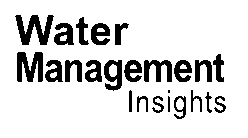In the sprawling fields of modern agriculture, a new player is taking flight, promising to revolutionize how we grow our food and manage our resources. Drones, those unmanned aerial vehicles once synonymous with military operations, are now soaring into the heart of sustainable farming practices. And at the forefront of this aerial revolution is Oksana Takhumova, a researcher from Kuban State Agrarian University, who is exploring how drone technology can transform agriculture into a precision-driven, environmentally conscious, and economically viable sector.
Takhumova’s work, recently published in the E3S Web of Conferences, delves into the multifaceted benefits of integrating drones into agricultural practices. “Drones offer a bird’s-eye view of our farms, quite literally,” Takhumova explains. “They can monitor vast areas quickly and efficiently, providing data that can optimize everything from irrigation to pest control.”
The implications for the energy sector are significant. Precision agriculture, enabled by drone technology, can lead to more efficient use of resources, including water and energy. By optimizing irrigation schedules, for instance, farmers can reduce water usage and the energy required to pump and treat that water. This is not just about saving costs; it’s about creating a more sustainable future.
Imagine a farm where drones constantly monitor soil moisture levels, adjusting irrigation systems in real-time to ensure that crops receive just the right amount of water. This isn’t science fiction; it’s a reality that Takhumova and her colleagues are working towards. “Early indicators of water stress or soil degradation can be identified and addressed promptly,” Takhumova notes. “This proactive approach can prevent yield losses and reduce the environmental footprint of farming.”
But the benefits don’t stop at the farm gate. Drones can also foster social and economic sustainability. Smallholder farmers, who often lack access to advanced technologies, can benefit from shared drone services. This not only offsets initial capital investments but also promotes equitable access to knowledge and resources. “Real-time, field-level data obtained via drones facilitate transparent communication among supply chain stakeholders,” Takhumova adds. “This leads to more informed decisions and policy-making.”
However, the path to widespread drone integration in agriculture is not without its challenges. Regulatory hurdles, the need for specialized training, and data privacy concerns are just a few of the obstacles that need to be overcome. Moreover, drones require robust infrastructure and technical support to ensure reliability in diverse farming contexts. Addressing these issues through targeted research, policy reforms, and educational initiatives is essential to fully harness drone technology for sustainable agricultural systems.
As we look to the future, the adoption of drones in agriculture heralds a new era of precision farming. This shift has the potential to revolutionize traditional practices and drive the sector towards greater environmental stewardship and socio-economic viability. For the energy sector, this means more efficient resource management, reduced operational costs, and a step closer to a sustainable future.
The research published in the E3S Web of Conferences, which translates to ‘Energy, Environment and Sustainability Web of Conferences’, is a testament to the innovative work being done in this field. As Takhumova and her colleagues continue to push the boundaries of what’s possible, one thing is clear: the future of agriculture is taking flight, and it’s looking more sustainable than ever.
